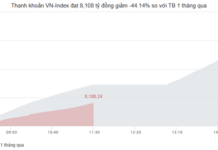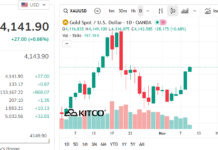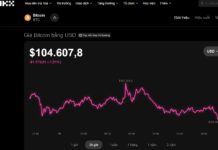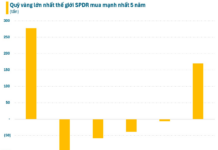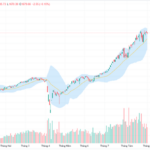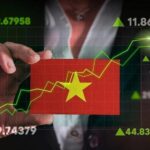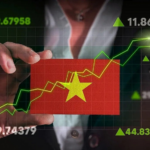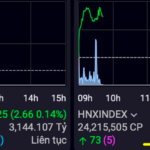When Investors Seek a Common Standard to Commit Capital
The global economy has weathered numerous cycles of boom and bust, eventually entering an era of globalization. On one hand, this interconnectedness allows financial institutions to invest more seamlessly in international markets. On the other, it introduces risks as they navigate the complex matrix of capital markets, each with its own regulations, structures, and maturity levels.

This complexity gave rise to the need for a standardized framework—one that objectively and consistently classifies and compares global capital markets. Pioneers like MSCI and FTSE Russell developed market classification systems, becoming indispensable tools for modern portfolio management. These systems enable organizations to allocate capital efficiently and manage risks on a global scale.
The origins of market classification trace back to 1965, when Capital International introduced the first global equity indexes for markets outside the United States. In 1986, Morgan Stanley acquired Capital International’s data licensing rights, birthing the MSCI (Morgan Stanley Capital International) brand. Meanwhile, FTSE Group, established in 1995 and rebranded as FTSE World Index in 1999, formally launched its country market classification system in 2000. Today, indexes from MSCI and FTSE Russell are the gold standard for global investors.
These classification systems group markets with similar economic characteristics, size, liquidity, and accessibility into categories like “Developed,” “Emerging,” “Frontier,” or “Standalone.” These categories serve as critical inputs for influential benchmark indices, such as the FTSE All-World or MSCI Emerging Markets Index.
Trillions of dollars from investment funds—mutual funds and ETFs alike—use these indices as performance benchmarks. Consequently, a country’s classification determines whether it attracts large-scale international investment flows.
Benefits of Market Upgrades
A market upgrade is more than a nominal change. It signifies a fundamental elevation in the market’s intrinsic quality, triggering significant impacts on a nation’s economy and financial system. The primary benefit is unlocking access to international capital.
The first and most immediate effect of an upgrade is passive capital inflows. According to a June 2025 report by Dragon Capital, when a market is included in indices like the FTSE Emerging Market, passive funds and ETFs must rebalance their portfolios to reflect the new weighting. This predictable capital inflow typically occurs around the effective announcement date.
The second wave—active capital—holds greater long-term significance. Upgraded markets attract active funds and institutional investors, whose capital dwarfs that of passive funds. These investors scrutinize companies based on fundamentals like valuation, governance, growth potential, and ESG factors. In Vietnam’s case, HSBC projected that a successful upgrade could attract up to $10.4 billion in active capital; the World Bank estimated $5 billion in foreign investment; and Dragon Capital forecasted cumulative inflows of $25 billion by 2030.
Historical precedents underscore this trend. When Qatar and the UAE were upgraded from Frontier to Emerging status in May 2014, Qatar saw $2.1 billion in net foreign portfolio inflows that year, while the UAE attracted $2.15 billion by November 2016. Poland’s upgrade to Developed status by FTSE in September 2018 boosted foreign ownership from 56% pre-2018 to 57% (2021), 65% (2023), and over 67% (2024).
Beyond capital inflows, upgrades yield broader economic benefits. According to GWCIndia, foreign investment enhances market liquidity and depth, making trading easier and reducing transaction costs. Lower capital costs enable businesses to raise funds more efficiently, fueling expansion, innovation, and infrastructure development.
Foreign investor participation also imposes stricter standards on corporate governance and transparency. Companies must meet higher disclosure requirements, enhancing their sustainability and, by extension, the market’s overall quality.
Ultimately, an upgrade signals a maturing financial system and economy, elevating a nation’s global standing and strengthening its position in trade negotiations.
Châu An
– 10:56 24/09/2025
September Market: Where Should Investors Focus Their Attention?
The VN-Index is predicted to sustain its upward trajectory, targeting the 1700-1800 range, presenting an attractive investment prospect for September. This positive outlook opens up new opportunities for investors, with a focus on sectors such as securities, port services, and steel.
HSBC: Vietnam Nears FTSE Upgrade Goal
“There is a possibility that Vietnam could be upgraded from a frontier market to an emerging market status by FTSE Russell in their upcoming review on October 7, 2025. However, according to HSBC’s latest report, the impact on capital flows may not be as significant as many anticipate.”
VN-Index Hits Record High, Surpassing 1,700 Points for the First Time
The Vietnamese stock market has been on a remarkable upward trajectory, and this trend has caught the attention of industry leaders and analysts alike. With the VN-Index surging, predictions are now being made that the index could reach a staggering 1,800 points this year and potentially go even higher in the near future. This has sparked excitement and interest among investors, who are now keenly watching this market’s every move.

